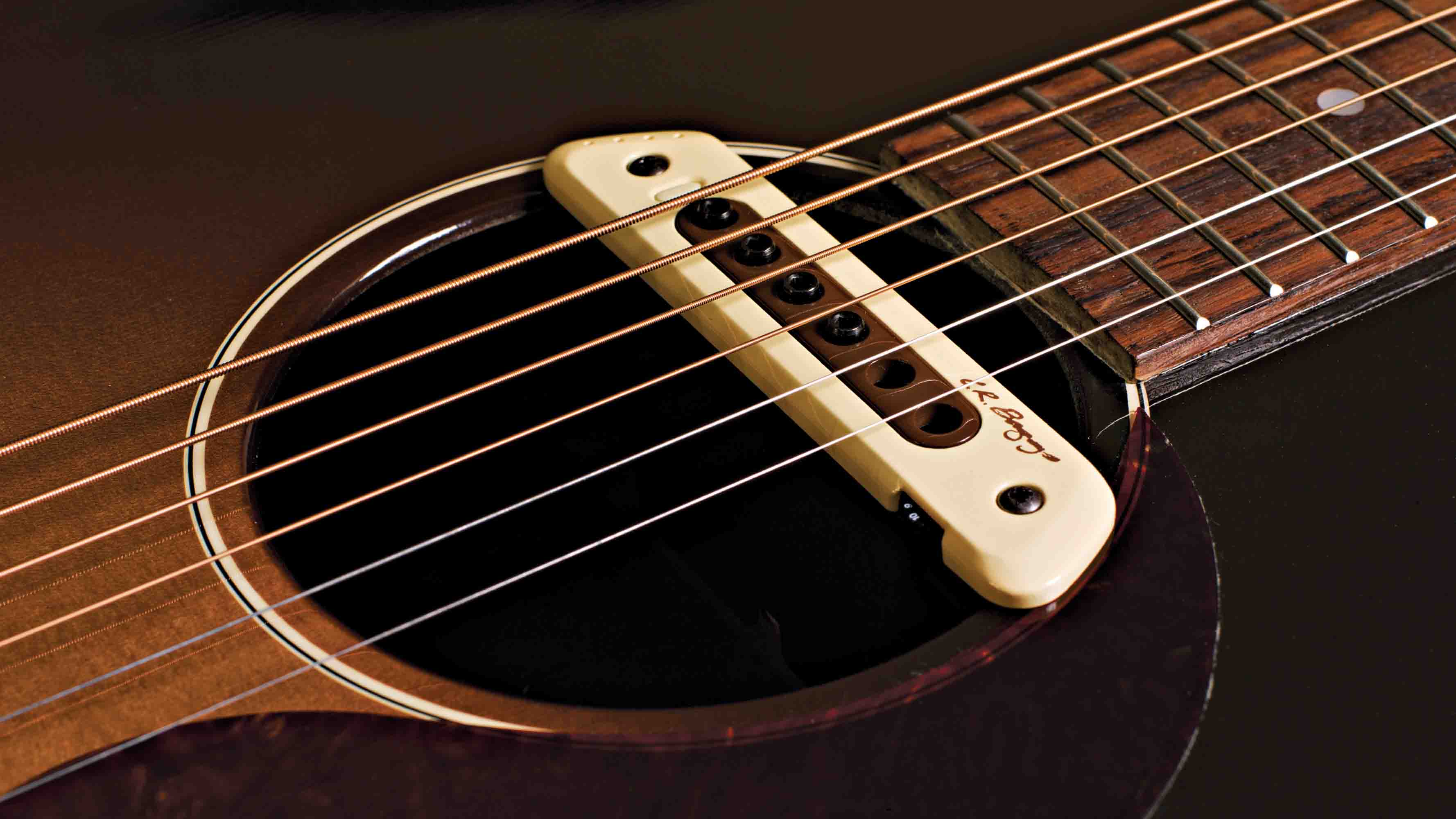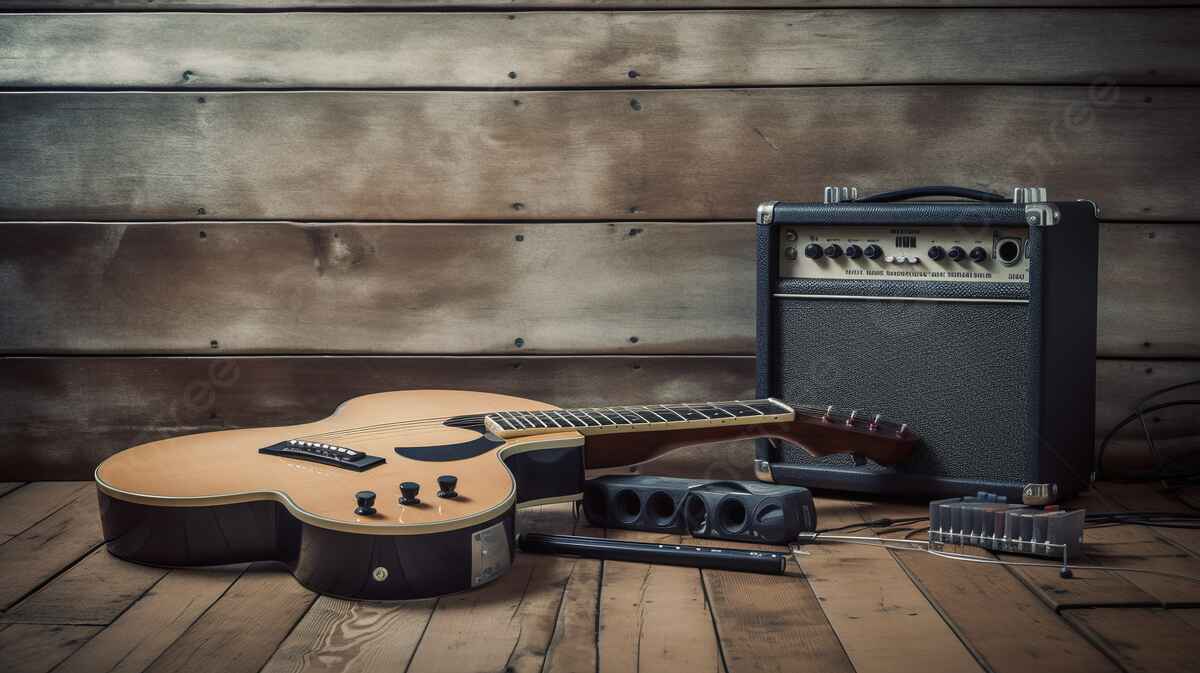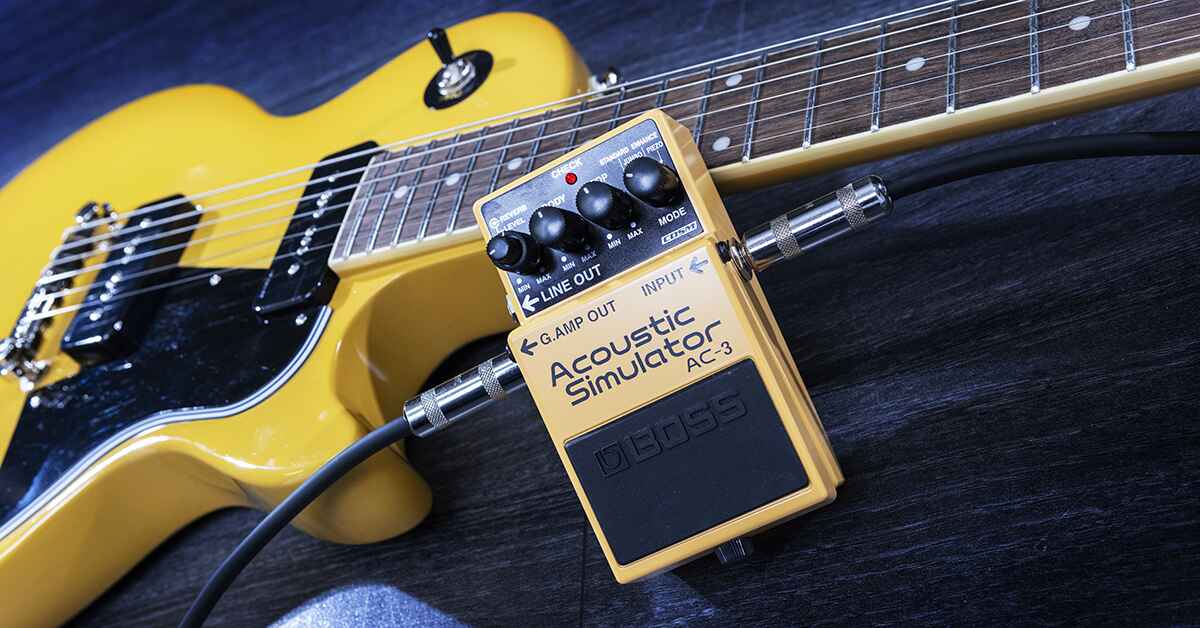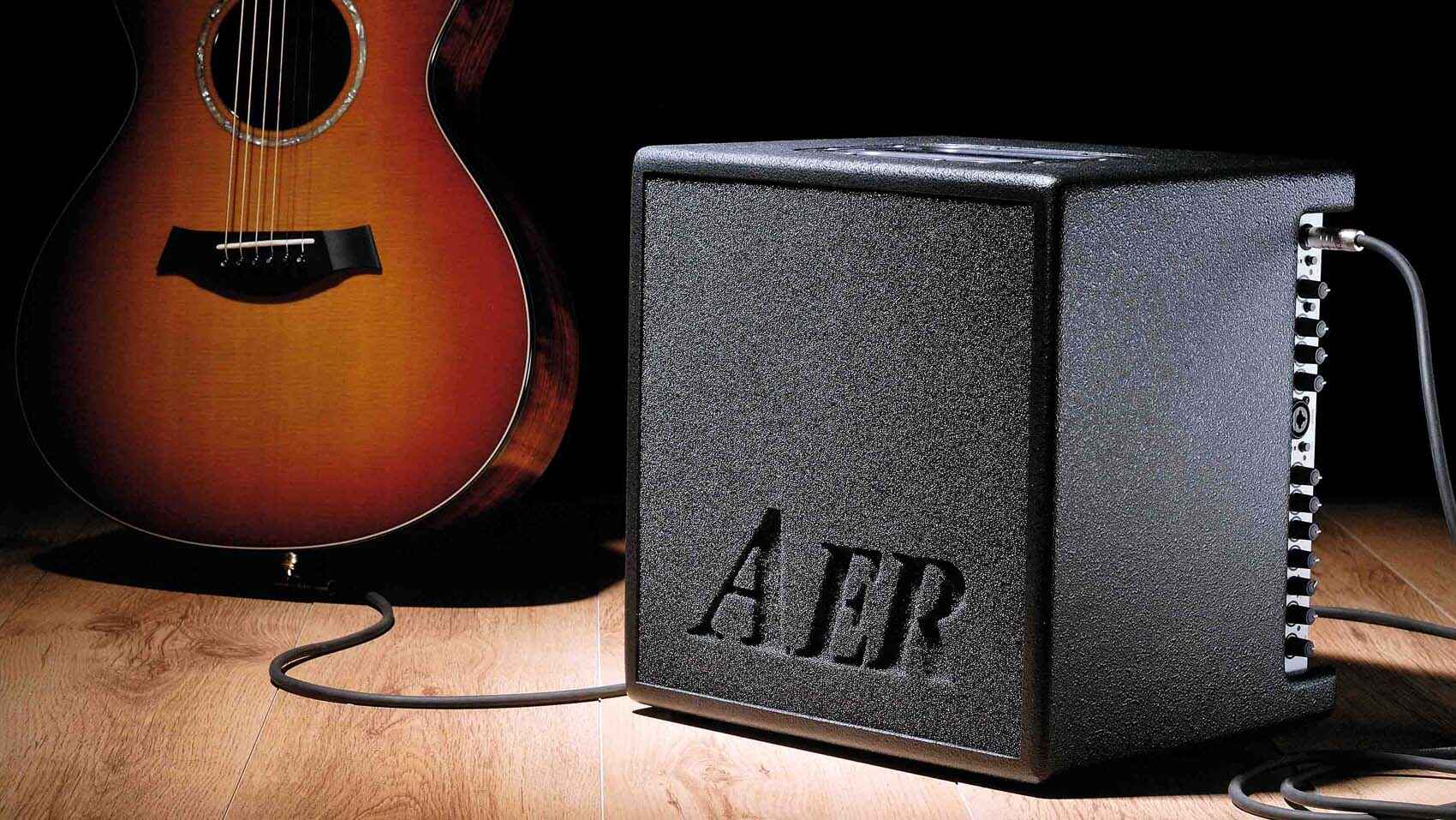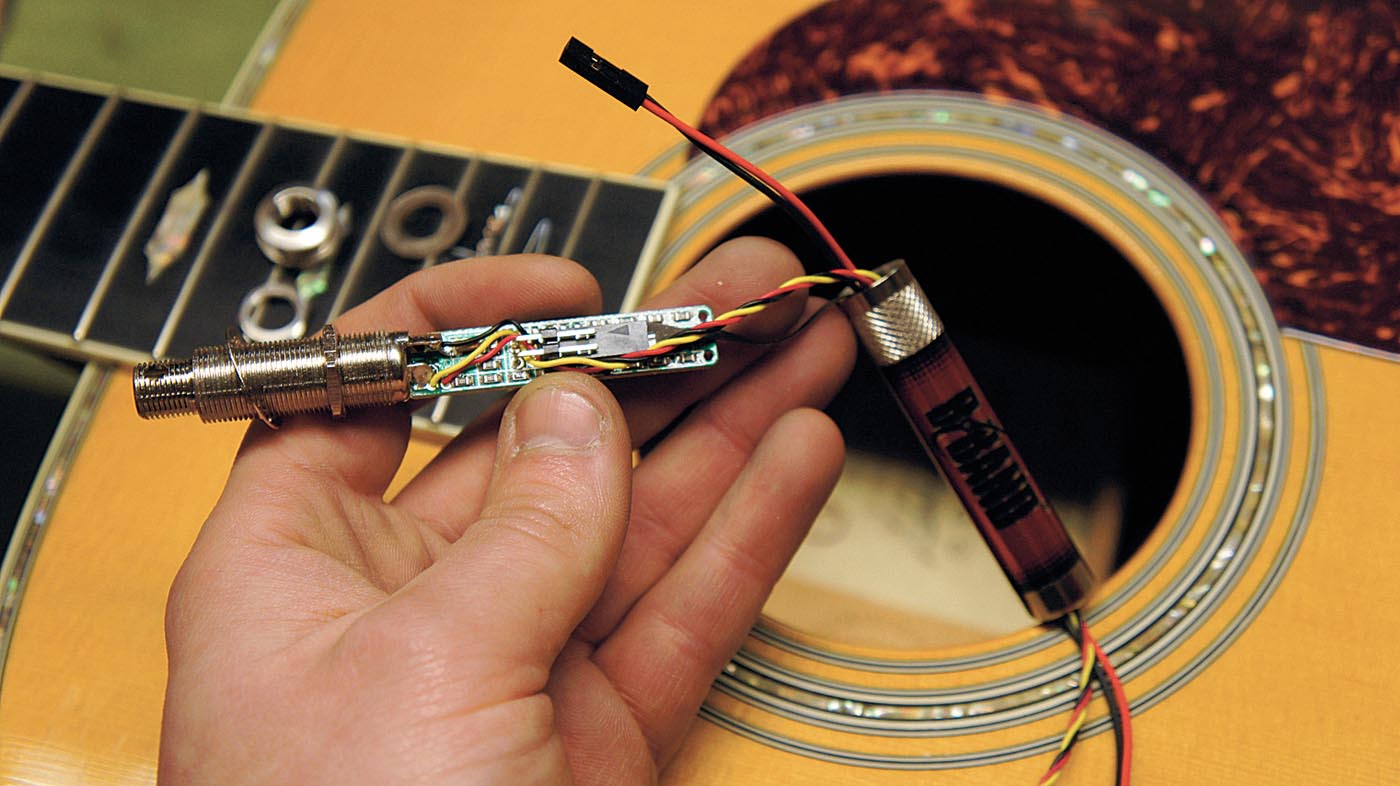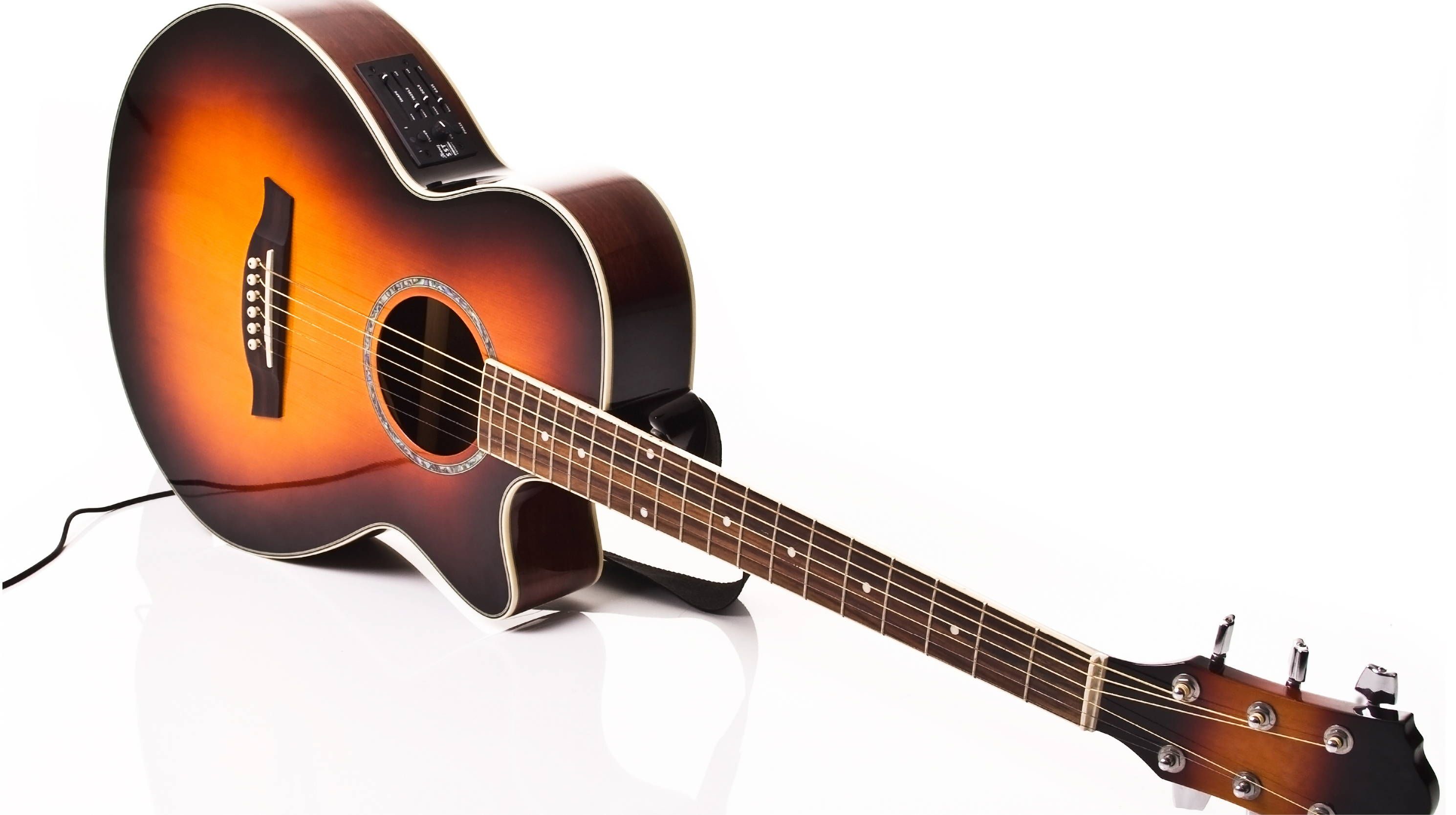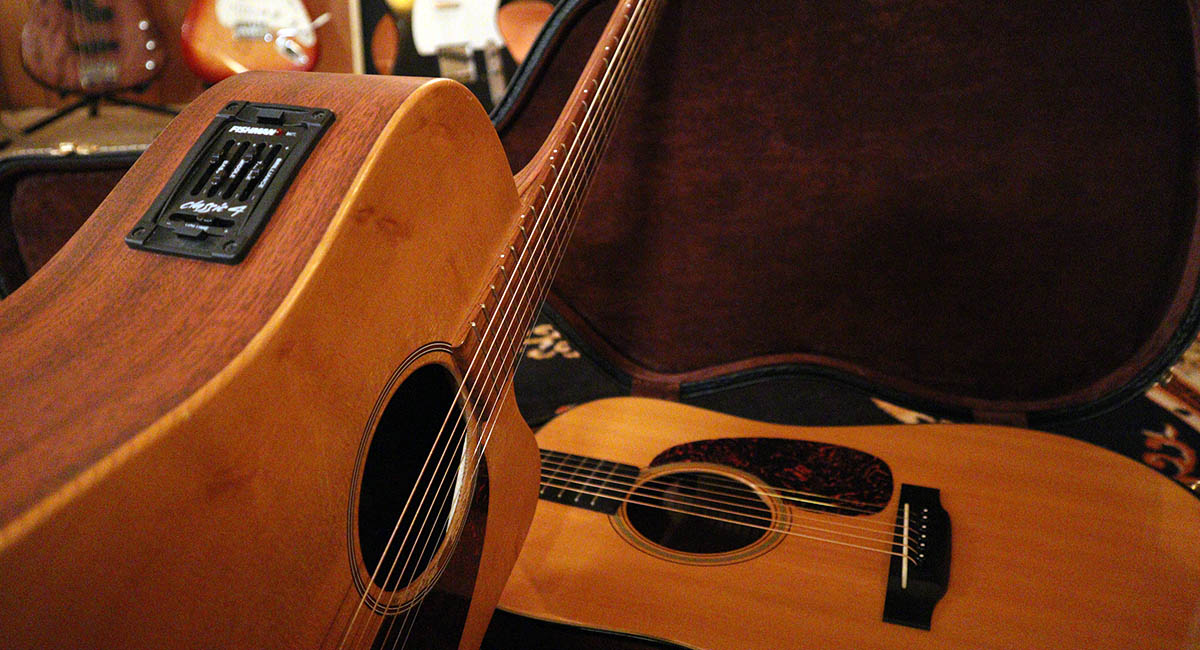Introduction
Welcome to the wonderful world of acoustic guitars! Whether you’re a seasoned player or just starting out, you’ve probably come across the term “pickup” when exploring different guitar accessories. But what exactly does a pickup do on an acoustic guitar?
In simple terms, a pickup is a device that captures the sound vibrations of your acoustic guitar and converts them into an electrical signal. This signal can then be amplified and manipulated to produce the beautiful tones and melodies that we all love to hear.
While acoustic guitars are traditionally known for their natural, unamplified sound, the addition of a pickup opens up a whole new realm of possibilities. It allows you to connect your guitar to an amplifier or PA system, giving you the ability to play at larger venues or collaborate with other musicians.
But how exactly does a pickup work? And what are the different types of pickups available for acoustic guitars? In this article, we’ll explore the fascinating world of pickups and delve into their various functions and characteristics. Whether you’re a guitarist looking to explore new sonic territories or simply curious about how these devices work, we’ve got you covered.
So, grab your favorite acoustic guitar and get ready to dive into the world of pickups. By the end of this article, you’ll have a better understanding of how they enhance the sound of your instrument and empower you to unleash your musical creativity like never before.
What is a Pickup?
A pickup, in the context of acoustic guitars, is a device that captures the vibrations of the guitar strings and converts them into an electrical signal. It essentially acts as a microphone for your guitar, allowing you to amplify and shape the sound of your instrument.
The pickup consists of one or more magnets wrapped in a coil of wire. When you pluck a string on your acoustic guitar, it vibrates and creates a magnetic field around the pickup. This fluctuating magnetic field induces an electrical current in the coil, which is then sent through a cable to an amplifier or other audio equipment.
Unlike electric guitars that have built-in pickups, acoustic guitars generally do not come equipped with pickups as standard. However, manufacturers often offer acoustic models with built-in pickups or the option to install pickups after purchase.
Installing a pickup on your acoustic guitar can bring a multitude of benefits. It allows you to amplify the sound of your guitar, making it suitable for live performances, recording sessions, or jamming with other musicians. Additionally, a pickup enables you to experiment with various effects and sound processing techniques, broadening your sonic possibilities.
It’s important to note that pickups are not limited to acoustic guitars alone. They are also commonly found in other stringed instruments like violins, cellos, and mandolins, providing similar functionality by capturing and amplifying the natural sound of the instrument.
Now that we have a basic understanding of what a pickup is and how it functions, let’s delve deeper into the inner workings of pickups and explore the different types available for acoustic guitars.
How does a Pickup Work?
To understand how a pickup works, let’s dive into the technical aspects. As mentioned earlier, a pickup consists of magnets wrapped in a coil of wire. When you pluck a string on your acoustic guitar, it vibrates and creates a small electrical current in the coil.
These vibrations disturb the magnetic field around the pickup, causing the magnets to move slightly. This movement generates a small electrical current in the coil of wire, in a phenomenon known as electromagnetic induction.
The coil of wire in the pickup acts as a transformer, converting the weak electrical signal generated by the string vibrations into a stronger electrical signal. This amplified electrical signal is then sent through a cable to an amplifier or other audio equipment, where it is further processed and amplified to produce the sound.
The output of the pickup can be adjusted using various controls on the amplifier or audio equipment, such as volume, tone, and equalization. These controls allow you to shape the sound of your guitar, giving you the ability to emphasize certain frequencies or achieve specific tonal qualities.
When it comes to pickups, there are two main types: magnetic pickups and piezo pickups. Magnetic pickups, as described earlier, use magnets and coils to capture the string vibrations. In contrast, piezo pickups utilize piezoelectric crystals or ceramics to sense the vibrations and generate an electrical signal.
Piezo pickups work by placing the crystals or ceramics underneath the bridge or saddle of the guitar. When the strings vibrate, they put pressure on the crystals, creating an electrical charge. This charge is then converted into an electrical signal and sent to the amplifier.
Both magnetic and piezo pickups have their own unique characteristics and produce different tones. Magnetic pickups tend to have a warmer, more traditional acoustic sound, while piezo pickups deliver a brighter and more “quacky” tone.
Now that we have explored how pickups work, let’s move on to discussing the different types of pickups available for acoustic guitars.
Types of Pickups for Acoustic Guitars
When it comes to pickups for acoustic guitars, there are several different types to choose from. Each type has its own unique characteristics and sound, allowing you to tailor your tone to personal preferences and musical styles.
1. Soundhole Magnetic Pickup: This type of pickup is commonly found in acoustic guitars and is positioned in the soundhole, either by clamping or attaching it magnetically. Soundhole pickups are easy to install and remove, making them a popular choice for musicians who want a temporary pickup solution. They capture the natural acoustic sound of the guitar and provide a balanced tone with good resonance.
2. Undersaddle Pickup: As the name suggests, undersaddle pickups are installed underneath the saddle of the guitar’s bridge. They use piezo crystals or ceramics to sense the vibrations of the strings and convert them into an electrical signal. Undersaddle pickups offer a clear, bright, and articulate sound with excellent string-to-string balance. They are often preferred for their natural acoustic tone and minimal impact on the guitar’s aesthetics.
3. Soundboard Transducer Pickup: This type of pickup is attached to the soundboard or top of the guitar, usually with an adhesive. Soundboard transducers capture the vibrations directly from the guitar’s top, resulting in a warm and full-bodied tone. They excel at reproducing the nuances and dynamics of your playing, making them popular among fingerstyle guitarists and those seeking a more natural acoustic sound.
4. Magnetic Soundhole Pickup: Similar to soundhole magnetic pickups, magnetic soundhole pickups are placed in the soundhole of the guitar. However, these pickups usually have individual magnets positioned under each string, allowing for better string-to-string balance and enhanced clarity. They provide a crisp, defined sound with a nice blend of warmth and brightness.
5. Contact Pickup: Contact pickups, also known as “pickups on a stick,” are small devices that attach to the surface of the guitar’s top or bridge with an adhesive or suction cup. They directly capture the vibrations of the guitar, resulting in a natural and accurate sound. Contact pickups are often used for percussive playing styles and are popular among players who require high feedback resistance.
These are just a few examples of the many types of pickups available for acoustic guitars. Each type has its own sonic characteristics, so it’s important to consider your playing style and desired tone when choosing a pickup.
Now that we’ve explored the different types of pickups, let’s move on to discussing the sound and tone produced by each pickup type.
Sound and Tone of Different Pickup Types
The choice of pickup can have a significant impact on the sound and tone produced by your acoustic guitar. Each pickup type has its own unique characteristics, allowing you to shape your tone according to your preferences and musical style.
1. Soundhole Magnetic Pickup: Soundhole magnetic pickups generally provide a warm and balanced tone. They capture the natural acoustic sound of the guitar and offer good resonance. The sound produced is often described as rich, full-bodied, and well-rounded. These pickups are ideal for players who want a classic acoustic sound with a touch of warmth.
2. Undersaddle Pickup: Undersaddle pickups tend to deliver a clear, bright, and articulate tone. They excel at reproducing the individual nuances of each string, offering excellent string-to-string balance. The tone produced by undersaddle pickups is often characterized as crisp and defined, with a good amount of clarity and projection.
3. Soundboard Transducer Pickup: Soundboard transducers produce a warm and full-bodied tone. They capture the vibrations directly from the guitar’s top, resulting in a sound that is rich in harmonics and resonance. These pickups excel at reproducing the dynamics and nuances of your playing, offering a more natural and expressive tone.
4. Magnetic Soundhole Pickup: Magnetic soundhole pickups provide a crisp and well-defined tone. The individual magnets positioned under each string ensure excellent string-to-string balance and enhanced clarity. The sound produced by these pickups is often characterized as clear, with a blend of warmth and brightness.
5. Contact Pickup: Contact pickups offer a natural and accurate tone. They capture the vibrations directly from the guitar’s surface, resulting in a sound that closely resembles the acoustic sound of the instrument. Contact pickups excel at capturing percussive playing styles and are known for their high feedback resistance.
It’s important to note that while these descriptions give a general idea of the characteristics of each pickup type, the actual sound and tone can vary depending on factors such as the quality of the pickup, the guitar it is installed on, and the player’s technique.
When choosing a pickup, it’s recommended to try out different options and listen to their sound samples to find the one that best complements your playing style and desired tone. Keep in mind that the pickup is just one part of the overall guitar tone, and factors like the guitar’s wood, construction, and strings also contribute to the final sound.
Now that we’ve explored the sound and tone of different pickup types, let’s move on to discussing how to install a pickup on an acoustic guitar.
Installing a Pickup on an Acoustic Guitar
If you want to take advantage of the benefits of using a pickup on your acoustic guitar, installing one can be a great option. While the installation process may vary depending on the type of pickup and the specific guitar, here are some general steps to guide you through the process.
1. Determine the pickup type: Start by choosing the type of pickup that suits your needs and preferences. Consider factors such as sound quality, ease of installation, and the impact on the guitar’s aesthetics.
2. Gather the necessary tools: Before you begin, gather the tools required for the installation. This may include screwdrivers, Allen wrenches, adhesive, clamps, or any specific tools mentioned in the pickup’s installation instructions.
3. Read the instructions: Carefully read the manufacturer’s instructions that come with the pickup. Different pickups may have specific installation methods, so following the instructions is crucial for a successful installation.
4. Prepare the guitar: Before installing the pickup, ensure the guitar is clean and free from any dust or debris. Remove the strings if necessary to access the pickup area easily.
5. Position the pickup: Follow the specific instructions provided by the manufacturer to position the pickup correctly. This may involve attaching it to the soundhole, securing it under the saddle, or adhering it to the soundboard.
6. Make necessary adjustments: Once the pickup is in place, you may need to make some adjustments to ensure optimal performance. This could involve adjusting the height or angle of the pickup, tightening or loosening screws, or making changes based on the pickup’s individual requirements.
7. Test the installation: After installing the pickup, it’s important to test it to ensure everything is working properly. Connect the guitar to an amplifier or audio equipment and test the sound output. Make any necessary adjustments if the sound is not satisfactory.
8. Reinstall the strings: Once you are satisfied with the pickup installation, it’s time to restring your guitar. Follow the proper stringing technique and ensure the strings are properly seated on the bridge and nut.
9. Fine-tune and adjust: Play the guitar and listen carefully to the sound. Make any necessary adjustments to fine-tune the pickup and achieve your desired tone. This may involve making changes to the pickup height, adjusting the pickup’s EQ settings, or experimenting with different amplifier settings.
Remember, if you are unsure about installing a pickup yourself, it’s always best to seek the assistance of a professional guitar technician or luthier. They have the expertise and experience to ensure a proper installation and minimize any potential damage to your guitar.
Now that we’ve covered the installation process, let’s move on to discussing the pros and cons of using a pickup on an acoustic guitar.
Pros and Cons of Using a Pickup on an Acoustic Guitar
Using a pickup on an acoustic guitar can open up a world of possibilities in terms of amplification and sound manipulation. However, like any guitar accessory, there are both pros and cons to consider when deciding to use a pickup on your acoustic instrument.
Pros:
- Amplification: The primary advantage of using a pickup is the ability to amplify your acoustic guitar’s sound. This is especially beneficial when playing in larger venues or with other amplified instruments, as the pickup ensures that your guitar’s sound can be heard clearly.
- Versatility: With a pickup, you can experiment with different effects pedals and sound processing techniques, expanding your sonic palette and allowing for greater musical experimentation.
- Performance Flexibility: Having a pickup-equipped acoustic guitar allows you to perform in a wide range of musical settings, whether it’s a small intimate gathering or a large concert stage. The ability to connect to a PA system or amplifier gives you greater control over your sound.
- Collaboration: When playing with other musicians, having a pickup on your acoustic guitar enables you to match the volume levels of amplified instruments and maintain a balanced sound within the band or ensemble.
- Recording Capabilities: Using a pickup allows you to easily connect your acoustic guitar to recording equipment, making it convenient to capture your performances and share them with others.
Cons:
- Altered Acoustic Sound: While pickups are designed to capture and replicate the natural sound of an acoustic guitar, some players may find that the amplified sound lacks the warmth and resonance of a purely acoustic instrument.
- Installation Limitations: Installing a pickup on an acoustic guitar can require some modifications, potentially involving drilling holes or using adhesive to secure the pickup. This may affect the guitar’s appearance or resale value, and some players may be hesitant to make such alterations.
- Feedback and Noise issues: Depending on the pickup type and the environment in which you are playing, feedback and unwanted noise can be a challenge. High volume levels or proximity to loudspeakers can sometimes result in feedback or interference, requiring careful adjustment of the pickup and proper technique to minimize these issues.
- Additional Cost: Purchasing and installing a pickup on your acoustic guitar can incur an additional cost, especially if you opt for a high-quality pickup and professional installation. This may be a consideration for players on a tight budget.
When weighing the pros and cons, it’s essential to consider your specific needs and musical goals. If the advantages of using a pickup align with your playing style and performance requirements, then investing in a pickup can greatly enhance your acoustic guitar-playing experience.
With a pickup-equipped guitar, you can enjoy the versatility and amplified sound while still being able to appreciate the natural beauty and resonance of your acoustic instrument.
Now, let’s move on to discussing some tips for choosing the right pickup for your acoustic guitar.
Tips for Choosing the Right Pickup for Your Acoustic Guitar
Choosing the right pickup for your acoustic guitar is crucial to ensure you achieve the desired tone and performance. Here are some tips to help you make an informed decision:
1. Determine your needs: Consider the specific requirements of your playing style and musical genre. Are you primarily going to perform live or record in a studio? Do you need a pickup that can handle high volumes or one that reproduces the subtle nuances of fingerpicking? Understanding your needs will help you narrow down your options.
2. Research and listen: Take the time to research different pickup options and listen to sound samples. Online demos and reviews can give you an idea of how a particular pickup sounds. Additionally, attending live performances or talking to fellow guitarists about their experiences can be beneficial.
3. Try before you buy: If possible, try out different pickups on your own guitar before making a purchase. This gives you the opportunity to hear how the pickup interacts with your specific instrument and how it responds to your playing style.
4. Consider installation: Some pickups require professional installation, while others offer easier, DIY installation options. If you’re comfortable with modifying your guitar yourself, you’ll have more flexibility in choosing a pickup. If not, consider consulting a professional guitar technician or luthier for assistance.
5. Evaluate the pickup type: Consider the tonal characteristics of different pickup types, such as soundhole magnetic pickups, undersaddle pickups, or soundboard transducers. Determine if you prefer a natural, balanced sound or if you’re looking for a specific tonal coloration.
6. Feedback resistance: If you anticipate playing at higher volumes or in venues with loud sound systems, consider a pickup with good feedback resistance. Certain pickup types, like contact pickups, are designed to minimize feedback and unwanted noise in challenging environments.
7. Budget considerations: Set a realistic budget for your pickup purchase. Remember that higher-priced pickups often offer better sound quality and durability, but there are also affordable options available that can still deliver a satisfactory tone.
8. Seek professional advice: If you’re unsure about which pickup to choose or need guidance, don’t hesitate to consult with a professional guitar technician or knowledgeable salesperson. They can provide recommendations based on your specific requirements and help you find the best pickup for your acoustic guitar.
By considering these tips, you can make a well-informed decision when choosing the right pickup for your acoustic guitar. Whether you’re a live performer, a recording artist, or simply a guitarist looking to enhance your playing experience, the right pickup can significantly improve your sound and musical expression.
Now that we’ve discussed tips for choosing the right pickup, let’s move on to the importance of maintaining and caring for your pickup.
Maintaining and Caring for Your Pickup
Proper maintenance and care of your pickup are essential to ensure its longevity and optimal performance. Here are some tips to help you keep your pickup in excellent condition:
1. Regular cleaning: Take the time to clean your pickup regularly. Dust, dirt, and grime can accumulate over time, affecting the pickup’s performance and sound quality. Use a soft, lint-free cloth or a brush to gently clean the pickup’s surface, removing any debris or buildup.
2. Protect from moisture: Keep your pickup protected from excessive moisture or humidity. Moisture can potentially damage the internal components of the pickup or cause unwanted corrosion. If you live in a humid environment or frequently play in humid conditions, consider using a dehumidifier or a moisture-absorbing product in your guitar case.
3. Avoid extreme temperatures: Extreme temperatures, whether hot or cold, can also impact the performance of your pickup. Excessive heat can damage the wiring and components, while extreme cold can cause the pickup to become less responsive. Store your guitar and pickup in a temperature-controlled environment when not in use.
4. Handle with care: When handling your guitar, be mindful of the pickup. Avoid applying excessive pressure or force on the pickup as it is a delicate component. Additionally, when changing strings or performing any maintenance on your guitar, take care not to damage or dislodge the pickup.
5. Check connections and wiring: Periodically examine the connections and wiring of your pickup to ensure they are secure and intact. Loose or damaged connections can result in poor sound quality or intermittent signal. If you notice any issues, consult a professional technician for assistance.
6. Shield against electromagnetic interference: If you experience unwanted noise or interference, such as humming or buzzing, consider using shielding materials or copper tape to protect your pickup from electromagnetic interference. This can help eliminate or reduce unwanted noise caused by external sources.
7. Follow manufacturer guidelines: Always refer to the manufacturer’s guidelines or instructions for specific care and maintenance recommendations for your pickup. Different pickups may have unique requirements, and following the manufacturer’s guidelines will help preserve the performance and longevity of your pickup.
8. Regular checkups: Consider having your guitar and pickup professionally inspected and serviced periodically. A professional technician can ensure everything is functioning correctly, make any necessary adjustments or repairs, and offer guidance on proper care and maintenance specific to your pickup.
By following these maintenance and care tips, you can ensure that your pickup continues to deliver optimal performance and sound quality. Taking good care of your pickup will not only extend its lifespan but also contribute to a more enjoyable playing experience.
Now that we’ve covered the importance of maintaining and caring for your pickup, let’s conclude with a recap of the key points discussed.
Conclusion
Using a pickup on your acoustic guitar can greatly enhance your playing experience, giving you the ability to amplify your sound and explore new sonic possibilities. Whether you’re a live performer, a recording artist, or simply looking to expand your musical horizons, a well-chosen pickup can be a valuable addition to your acoustic guitar setup.
In this article, we’ve explored the world of pickups for acoustic guitars. We’ve learned what pickups are, how they work, and the different types available. We’ve discussed the sound and tone produced by each pickup type and the pros and cons of using a pickup on an acoustic guitar. Additionally, we’ve provided tips for choosing the right pickup for your specific needs and offered guidance on how to install and care for your pickup.
Remember, choosing the right pickup requires careful consideration of your playing style, musical preferences, and performance requirements. Take the time to research, listen, and even try out different pickups before making a decision. Seek professional advice if needed and prioritize proper installation and maintenance to ensure optimal performance and longevity of your pickup.
By selecting the right pickup and taking care of it, you can unlock new tonal possibilities and make your acoustic guitar truly shine in any musical setting. Whether you’re strumming chords, fingerpicking delicate melodies, or unleashing powerful solos, a well-chosen pickup will help you bring your music to life.
So go ahead, explore the world of pickups, experiment with different sounds, and let your acoustic guitar’s voice be heard in all its amplified glory!







